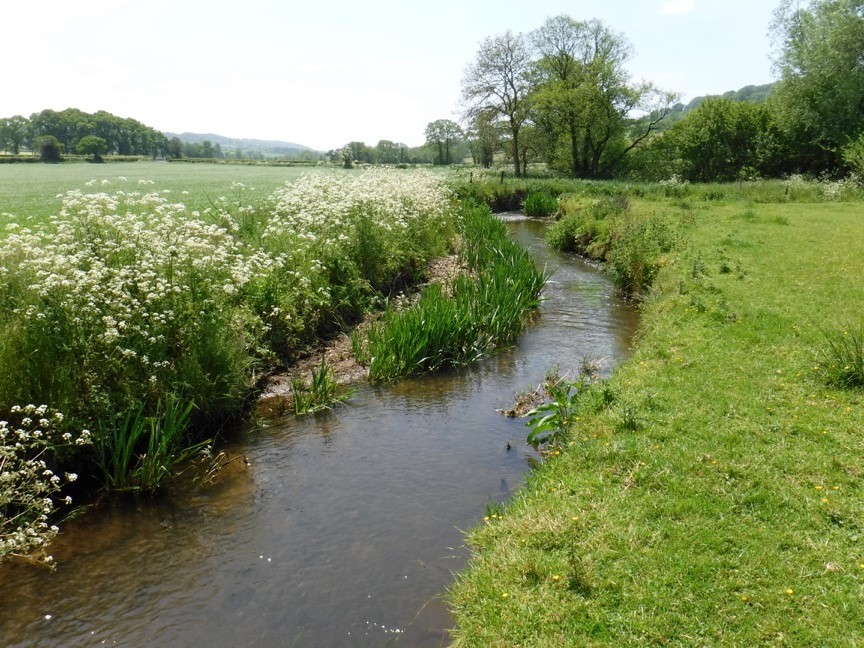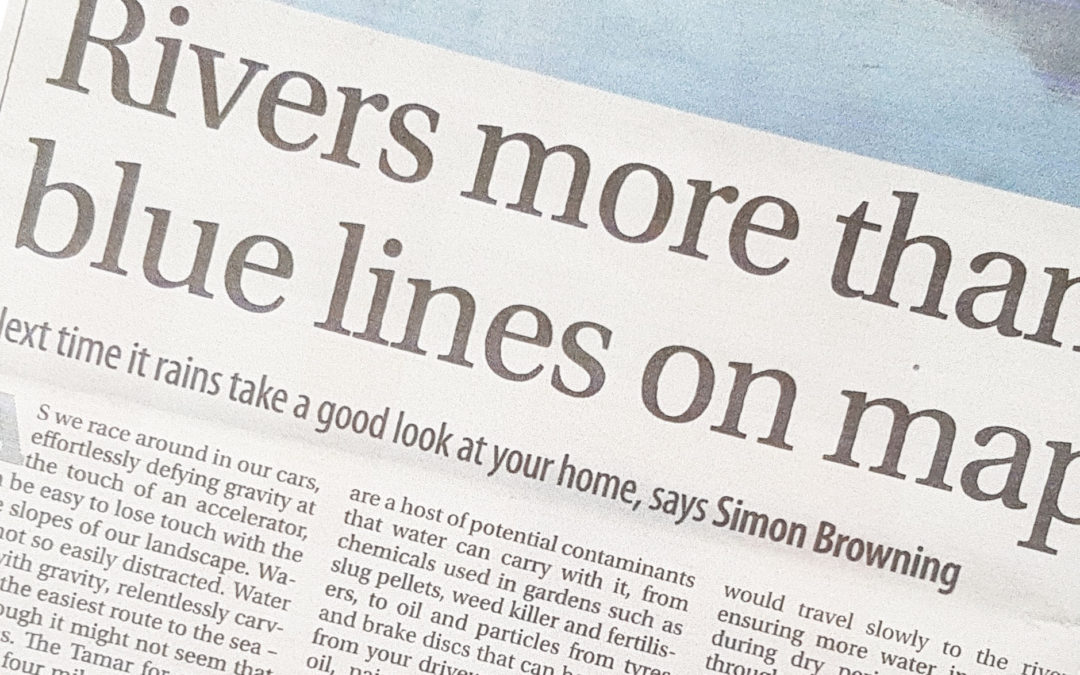Simon Browning, our Senior Data & Evidence Officer, shares his thoughts with the Western Morning News.
As we race around in our cars, effortlessly defying gravity at the touch of an accelerator, it can be easy to lose touch with the subtle slopes of our landscape. Water is not so easily fooled.
At Westcountry Rivers Trust we see the countryside as a mosaic of river catchments – the area of land that drains into each river. And protecting and restoring the health of these areas has been our driving force since the Trust was created 25 years ago.
There are many ways we can affect the health of the rivers across the Westcountry. Take the rain that falls on your roof or hard surfaces in your garden. That will most likely end up in the surface water drainage network. Depending on where you live, that may go straight to the nearest stream or – if you live in an area with a ‘combined sewer network’ – it will go via the local sewage treatment works, along with what you flush down the loo.
There are a host of potential contaminants that water can carry with it, from chemicals used in gardens such as slug pellets, weed killer and fertilisers, to oil and particles from tyres and brake discs that can be washed from your driveway. Pouring waste oil, paint or chemicals down the drain may seem like a convenient way of getting rid of these substances – but it is invariably a bad idea. They will make their way into rivers or streams sooner or later.
As we pave over gardens and build on our green spaces, the landscape is getting harder and less absorbent. This means that rain is quickly funnelled into the drainage network and then the rivers, causing a rapid rise in water level that increases the risk of flooding. This influx of water can overwhelm the sewers, so that the combined sewer overflows (CSOs) operate more frequently, sending untreated wastewater into rivers.
Many of us are familiar with coastal CSOs as they have an immediate impact on water quality on beaches, but it is not so well known that there are many more inland CSOs. Wherever sewage is pumped, these act as ‘relief valves’ that operate during excessive flows. You can do your bit to reduce these ‘peak’ flows by installing a water butt or a raingarden – or better still, both.
With our increasingly impermeable landscapes, less water is stored in the soil. This ‘groundwater’ would travel slowly to the rivers ensuring more water in the river during dry periods. As it moves through the soil and bedrock it is filtered too, so when it does reach the river it is cleaner. With reduced groundwater inputs, our rivers are more vulnerable to droughts. Climate change is expected to bring more extreme weather patterns, meaning more heavy rain, but also more frequent dry periods too.
With a multitude of external influences, to improve our rivers we need to look closely at every aspect of the lives we lead in the surrounding landscape.
For us, part of this has included working with farmers and other rural landowners to improve soil condition (healthy soils with lots of organic matter retain more water for longer than poor quality or compacted soils). Planting trees and creating wetlands also helps. But there’s more we can all do much closer to home.
Rivers are not just those blue lines on a map – they also start on our roofs and in our gardens, they flow from our taps and get flushed down the loo. Wherever you interact with water you have an opportunity to help.
At the heart of the Westcountry, spanning the Devon / Cornwall border is the Tamar catchment. Its main neighbours are the Torridge to the north, Dart and Teign to the east and the Camel and Fowey to the west.
As the Tamar flows south from its source just 4 miles from the north coast, it is joined by other rivers including the Ottery, Kensey and Inny from Cornwall, and the Deer, Claw, Carey and Lyd from Devon. Together these rivers – and countless streams, brooks, ditches and drains – receive any water that falls as rain and help it on its way to the sea via Plymouth Sound.
These smaller watercourses play a vital role in providing habitat for wildlife and safe drinking water for us, but they are often hidden and inaccessible – which can lead to them being forgotten and abused. And this is where our work comes in.
Next time it rains, take a closer look at your home, school or place of work – is there more that you could do to improve the resilience of our water environment?



40 years ago I used to fish a section of the little river Axe in East Devon. Then we used to take some trout home to eat. But today, even if you could find any trout to catch (which is doubtful), they certainly would not be eaten. Today compared to those halcyon fishing days when the river would boil with rising fish in late April early May, the river is dirty after heavy rain and polluted with chemicals and land runoff from farms and roads. I was even more shocked when I took a walk by the river Coly (which is not more than a brook) by the amount of farm waste that was making the river stink. When I fish today I have to go to Mid-Wales away from intensive farming and traffic.
It’s sad to hear that you feel you need to go to Wales (although a beautiful place) to fish. Our Westcountry CSI scheme is intended to help build awareness of these issues and to document their occurrence and impact wherever possible. With an active and engaged group of volunteers taking part we stand a better chance of raising these issues further up the public agenda, so that policy and behaviours can align for the benefit of our rivers and the wider environment. You can find out more at: https://wrt.org.uk/get-involved/
You can also discover more about our Westcountry Angling Passport scheme and Fish Pass App for Cornwall at: https://westcountryangling.com/?v=79cba1185463
We hope to see you back fishing in the region soon.